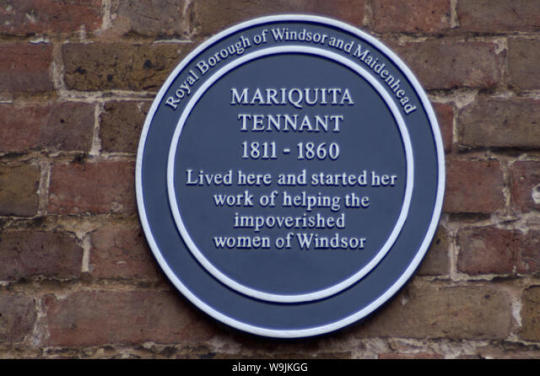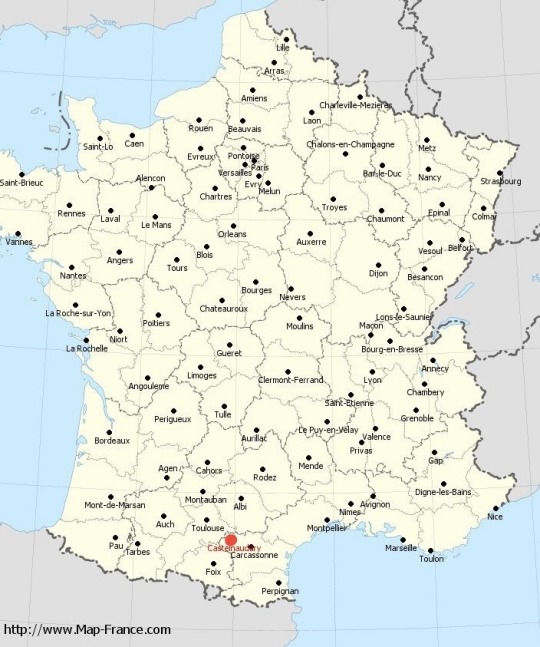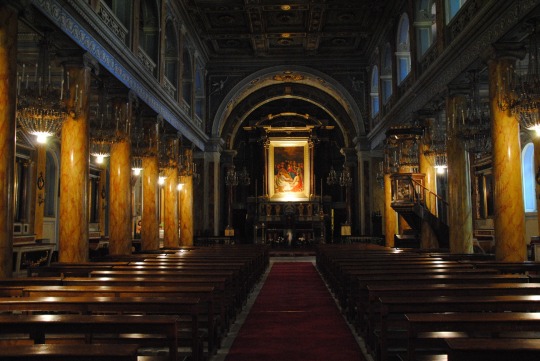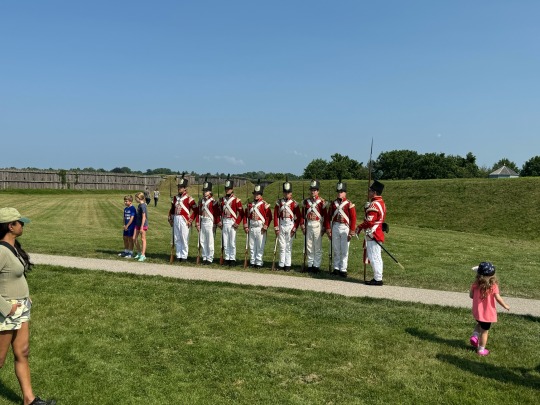#19th Century History
Explore tagged Tumblr posts
Text
Amandoi ne-am intins dupa tragaci 🗣🗣🗣🗣🗣💯💯💯🔥🔥🔥

#histoire#history#19th century history#history inspired#new art dropped#xix century#19th century#historical figures#napoleon#napoleon bonaparte#alexander i of russia#tsar alexander i#alexander i#napoleonic era#history fanart#history art#history fandom#historical art#historical references#noapte buna#we both reached for the gun#chicago movie#chicago 2002#movie reference
218 notes
·
View notes
Text
The more I talk to history people the more I realize that the Terror brainrot is collective
30 notes
·
View notes
Text

35 notes
·
View notes
Text
Fort York, Toronto, Ontario.










#meerathehistorian#john graves simcoe#Fort York#history#early 19th century#19th century#war of 1812#19th century history#canadian history#english history#my photos#photography#regency#toronto#canada#queue are made by history
28 notes
·
View notes
Text


Mariquita Tennant (born Maria Francesca Eroles i Eroles) was a Catalan woman who protected abused and poor women in Windsor (England).
How did she end up in England?
Mariquita was born in the village Pla de Sant Tirs, in the High Pyrenees of Catalonia. During the war between those who wanted an absolutist monarchy and the liberals, Mariquita's father was involved in the liberal side and between 1821 and 1823 he was the leader the local miquelets (militia). When the King of France sent the army known as the Hundred Thousand Sons of Saint Louis to help restore the absolute monarchy, many liberals went on exile to England. Mariquita followed her father, mother and three siblings on exile to London.
They settled in Somers Town, a neighbourhood that had become home to many exiles from Catalonia and the Valencian Country and that had previously also become home to exiled French revolutionaries and American independentists. In February 1833, Mariquita married David Reid, son of a Scottish beer maker who had become wealthy running a pub chain in England. But in November of the same year, David threw himself down a window during an epileptic attack, resulting in his death. Soon after, Mariquita's first and last daughter Mary was born, but she also died soon. Some years later, Mariquita married again. Her new husband was Robert Tennant, but he died a sudden death in 1842.
In 1846, at 38 years old, her first husband's family allowed her to live in one of their properties. She turned this house into a shelter for girls who had been abused by society. There were many girls and women in this situation, so the house was full very soon. Quickly, Mariquita looked for funds and allied with the Anglican church to create a local branch of the House of Mercy. In 50 years, this institution attended and housed 2,500 girls in Windsor, many of which were girls who had been forced into prostitution by poverty and until then had had no way to escape.

The house that Mariquita's first husband's family let her live in, and which she turned into a shelter.
Mariquita suffered bad health for most of her years of service, and in the end died in 1860. She's buried in Saint Andrew's cemetery, overlooking the house she turned into a shelter.
In 2005, the Windsor and Maidenhead city council uncovered a blue plaque to remember her (in England, blue plaques mark the place where a historical event happened or recognise a historical person), though there's a small mistake because it says she was born in 1811 but she was actually born on November 9th 1807.
She's the only Catalan person to have an English blue plaque.
#història#mariquita tennant#windsor#london#england#pla de sant tirs#ribera d'urgellet#catalunya#history#1800s#19th century history#women in history#english history#uk history#women's history#women's rights#europe#other countries#anglaterra#diaspora
68 notes
·
View notes
Text
I can now share the poster on Careers of the Franklin Expedition that I presented at Terror Camp! Here's a blog post about Terror Camp, the project, and some possible next steps.
And here's the poster in all its glory: https://tinyurl.com/fe-careers
This weekend was really such a fantastic experience. I can't put it into words that do it justice.
#terrorcamp2023#terror camp#franklin expedition#naval history#maritime history#19th century history#my writing
69 notes
·
View notes
Note
I’ve heard that nationalism, which is to say the idea of a larger abstract national identity, was t really a thing until 1500s generally. It probably built over time, and it seems that mid to late 1800s w a lot of unification movements, nationalist platforms, reforms, conquests invasions civil wars etc , a few counties in that period were United into a national identity into the country image they’re generally thought of today.
What I’m wondering, if this is something you’re familiar with, is if you have any recommended reading for this period of 1800s?
I am very interested in seeing how those nationalist sentiments were used to build these coalitions into countries in that newly budding global age
Thank you!
I tend to favor a much earlier date or at least I think we need to give more weight to proto-nationalism as a phenomenon, because I think there's a slight teleological mistake that's made in assuming that national identity has to go hand-in-hand with a national state.
Whether it's in the Hundred Years War or wars for independence in Scotland, Wales, Ireland, or what have you, there was a long period prior to the 1500s where quite local identities could co-exist with a strong negative polarization against outgroups. You might think of yourself as a MacDonald first and a Scot second, but no matter how much you hated the Campbells you knew they weren't English, or you could be a Guelph and simultaneously be a local patriot and want to keep the German Emperor out of Italy, or be Machiavelli and be a devoted Florentine republican but also believe in uniting Italy against the Spanish and the French.
In terms of book recommendations:
Imagined Communities is a must-read.
Greenfield and Breuilly are also good.
I think Hobsawm's work on nationalism is classic.
I would also recommend Moggach and Leduc as well as Mark Traugott on the interplay between nationalism and socialism in 1848.
EDIT: Ernest Gellner in Nations and Nationalism is a very important text, but I would recommend reading him together with his major critic Philip Gorski ("The Mosaic Moment: An Early Modernist Critique of Modernist Theories of Nationalism").
#history#book recommendations#nationalism#medieval history#early modern history#european history#19th century history
39 notes
·
View notes
Text

Lady with a red hat (portrait of Maggie Wilson) by Frank Duveneck (1848 - 1919)
#oil painting#19th century history#19th century art#duveneck#frank duveneck#portrait#victorian#victorian woman#edwardian#european art#classical art#elegance#femininity
15 notes
·
View notes
Text

Daisy, Princess of Pless (2nd September 1898)
Daisy, born in 1873 as Mary Theresa Olivia Cornwallis-West, was the daughter of Col. William Cornwallis-West and Mary "Patsy" FitzPatrick (one-time mistress of the future Edward VII); she was descended from the Earls of De La Warr, the Marquesses of Headfort, and the ancient Irish Kings of Osraige. Her sister was the Duchess of Westminster and her brother was the second husband to Lady Jennie Churchill, mother of Winston Churchill. In 1891, she married Hans Heinrich XV von Hochberg, member of a fabulously wealthy aristocratic family in the German Empire. Upon her marriage she became known as Princess of Pless (Fürstin von Pless in German). She had four children and divorced her husband in 1922. She died in relative penury in Silesia (modern-day Poland) in 1943; and although originally buried in the Hochberg family mausoleum, her remains were desecrated and scattered by Red Army soldiers in 1945, and she remains buried in an undisclosed location.
photo and info via wikipedia.org
#history#daisy princess of pless#old royalty#german history#german empire#german aristocracy#german royalty#polish history#british history#english history#old photo#victorian era#victorian#victoriana#english aristocracy#british aristocracy#old photography#vintage photo#vintage photography#edwardian era#edwardiana#edwardian photography#edwardian#19th century#19th century history#19th century photography#portrait photography#1890s#1898#e
13 notes
·
View notes
Text

“women be shopping” - daniel o’connell, 19th century
#history memes#history shitposting#history student#irish history#memes#irish politics#modern history#19th century history#19th century#humor#humour
7 notes
·
View notes
Text
cuvinte de duh

#histoire#history#19th century#19th century history#napoleonic era#xix century#history fandom#historical figures#historical art#napoléon#napoleon#napoleon bonaparte#napoleon ii#historical figure#historical references#modern au#history art#history inspired#new art dropped#new artwork#new drawing#early 1800s#early 19th century#notes art#mob psycho memes
115 notes
·
View notes
Text
Giuseppe Donizetti — served Napoleon on Elba and accompanied him during the Hundred Days

Portrait of Giuseppe Donizetti later in life
Giuseppe Donizetti was born into poverty in 1788, in the Northern Italian city of Bergamo. The eldest of his siblings, he worked from a young age, training as a tailor’s apprentice. His true talent was in music, which was spotted early on in his life.
Giuseppe was conscripted in 1808 at the age of 20. He served the Napoleonic Kingdom of Italy in the Seventh Italian Regiment. He fought against Austria in the War of the 5th Coalition in 1809. He spent the years of 1811, 1812 and 1813 in Spain.
In 1811, he was became ill en route to Spain and was hospitalized at Castelnaudary in France. 43 years later in 1854, he wrote about it to the court of the Ottoman Empire:
“Constantinople, November 22, 1854. Mémoire to His Highness Achmed-Fethy Pasha. Finding myself in a comfortable position thanks to the beneficences of Our August and Glorious Sovereign, I cede to the Hospital of Castelnaudary (Aude), in which I was ill in 1811, the portion coming to me of the legacy left by the Emperor Napoleon I to the Battalion of the Island of Elba. The papers establishing my right to participate in the credit opened up by the Decree of August 5, 1854, issued at Biarritz by His Imperial Majesty the Emperor Napoleon III, I have been obliged to send to France at the time when I was honored with a brevet as Chevalier of the Legion of Honor. Your Highness's Very humble Servant, Joseph Donizetti.”


Location and photograph of Castelnaudary
After the dissolution of the Kingdom of Italy and the First French Empire, he enlisted in the French military and was stationed on the island of Elba as a military flutist. It was on Elba, in the town of Portoferraio, where he was married in 1815.
That same year, he accompanied Napoleon during the Hundred Days, traveling with him on the same ship from Elba to Antibes, France. He likely fought at the battle of Waterloo.

Landing of Napoleon I in Antibes in 1815
After Napoleon:
The Austrians took control of Northern Italy after the fall of Napoleon. According to the historian Emre Aracı, Giuseppe was “a greal admirer of Napoleon and the French […] Giuseppe strongly opposed his country’s domination by the Austrians. Evidence shows that he secretly took part in the Carbonari resistance and even appeared at court trials.”
Giuseppe Donizetti became a composer, and had a full career as Instructor General of the Imperial Ottoman Music. He even composed the first National Anthem of the Ottoman Empire, the Mecidiye Marşı. His main legacy is introducing Western marching music to the military of the Ottoman Empire.
He was employed by the Ottoman government on 17 September 1828 for an annual salary of 8,000 francs. This was considered a very high salary by his family. Giuseppe’s trouble with the Austrian authorities after the fall of Napoleon may have been a motivator for him to leave Italy. He moved to Constantinople at the age of 39 and spent the rest of his life there.
Giuseppe’s patron was Sultan Mahmud II, who ruled from 1808 to 1839, and Sultan Abdulmejid I, who ruled from 1839 to 1861.
According to the historian Emre Aracı:
“The Donizettis were so well-liked in the Ottoman capital that when fire broke out near their house Ahmet Fethi Pasha, the sultan's brother-in-law, ordered all the houses surrounding the maestro's home to be razed to the ground in order to prevent the flames reaching the building.”

Sultan Mahmud II
His brother, Gaetano, called him his fratello turco— Turkish brother, writing to his friend that “He loves Constantinople, to which he owes everything.”
Giuseppe even encouraged his brother to move to Constantinople, but Gaetano declined. “I do not want to play the fool like my brother, the Bey, who, after having earned more than I perhaps, stays there in ancient Byzantium to scratch his belly between the plague and the stake,” wrote Gaetano.
Giuseppe moved to Constantinople two years after the creation of the Imperial Musical School (Muzıka-i Hümâyûn), which was an Ottoman institution which trained its students in Western style of music. He was specifically recruited as an expert to help lead this effort.

Giuseppe’s younger brother, Gaetano. By Francesco Coghetti, 1837
Gaetano Donizetti, though younger than Giuseppe, became the much more successful and internationally well-known brother, producing nearly 70 operas in his life. Gaetano is considered one of the most successful opera composers in history. Because of this, Giuseppe is widely known as Gaetano Donizetti’s brother. The historian Emre Aracı pointed out that this has actually been good for Giuseppe’s reputation because it has enabled him to be remembered when many other composers have been forgotten.
Both brothers were awarded the Ottoman Order of Nișan-i Iftihar. When Gaetano received the award at the Ottoman Embassy in Paris, he proudly said: “Napoleon belongs to two centuries, I to two religions.”
Burial:
Giuseppe died in 1856, and is buried in the vaults of St. Esprit Cathedral, on the European side of Constantinople, in the district called Pera (now called Beyoğlu). According to Emre Aracı, the district “was once the home of a thriving Christian community”. The Church was built in 1846, 10 years before Giuseppe died.

Interior of St. Esprit Cathedral
Giuseppe and his brother Gaetano are two great success stories and examples of people from impoverished backgrounds who go on to live prosperous and interesting lives.
Sources:
Herbert Weinstock, Donizetti and the World of Opera in Italy, Paris and Vienna in the First Half of the Nineteenth Century, 1963
Emre Aracı, Giuseppe Donizetti at the Ottoman Court: A Levantine Life, The Musical Times, Vol. 143, No. 1880 (Autumn, 2002), pp. 49-56
Emre Aracı, Giuseppe Donizetti Pasha and the Polyphonic Court Music of the Ottoman Empire, The Court Historian, Volume 7, 2 December 2002
Özgecan Karadağli, Western Performing Arts in the Late Ottoman Empire: Accommodation and Formation, 2020
#Giuseppe Donizetti#Donizetti#napoleonic era#napoleonic#Ottoman Empire#ottoman#napoleon#napoleon bonaparte#gaetano donizetti#turkey#turkish history#ottoman history#first french empire#French empire#history#19th century#france#french history#the hundred days#Francesco Coghetti#Istanbul#Constantinople#1800s#19th century history#Napoleon’s soldiers#opera#composers#composer
11 notes
·
View notes
Text
Chopin's Abelard
I really enjoyed Karolina Żebrowska's latest podcast episode on Fryderyk Chopin's letters to Tytus Woyciechowski. There's a solid case that Chopin was queer (though – as she also says – this is severely underresearched because Poland is hardly the most progressive country), and this line in one of the letters she read really jumped out at me:
Najdroższe życie moje! Hipokryto obrzydły! Przemierzły, obmierzły Hrabio Ory! Abelardzie itd. My dearest life! Disgusting hipocryte! Detestable, loathsome Count Ory! Abelard etc.
Fryderyk Chopin to Tytus Woyciechowski, 18 August 1830 (my translation)
Aside from the obvious "my dearest life" and the exaggerated, playful slandering, Chopin also references two fictional characters.
Count Ory, the title characters in Rossini's Le Comte Ory comedy opera, is a rake who spends the entirety of the plot attempting to break into a castle and seduce Countess Adèle. One of his strategies involves crossdressing as a nun, and at the very end when Ory finally manages to enter Adèle's bedroom, he ends up accidentally wooing and kissing his male page, Isolier, who took her place to trick Ory (and then help him escape).
Abelard refers to one of the two main personages in the medieval story of Héloïse and Abelard, a true account of a tragic love affair that was a favourite of sentimental authors in the 18th century, including Pope and Rousseau, who wrote fictional adaptations based on the historical love letters. The story is particularly known for the lovers' secret marriage and then their tragic separation, after which they can only communicate their love and longing through letters – in other words, the perfect analogy for lovers who are separated by distance.
Interpret as you will, but the references to randy lovers, men kissing men (a common theme in Chopin's letters), sneaking into bedrooms, secret romances and parted lovers certainly stand out for me.
#queer history#19th century history#fryderyk chopin#frederic chopin#chopin#tytus woyciechowski#polish history#heloise and abelard
40 notes
·
View notes
Text
Fort George, Ontario.



#meerathehistorian#war of 1812#history#early 19th century#19th century#canada#ontario#english history#canadian history#19th century history#1810s#my photos#photography#rule britannia#<- sarcasm
15 notes
·
View notes
Text
( Just saying... )




youtube
youtube
#muse: mary woodhull#muse: éponine#muse: anna strong#muse: abigail strong#muse: eliza schuyler-hamilton#muse: mary floyd tallmadge#muse: philomena cheer#about / to confide or confess#meta#les mis letters#american revolution#french revolution#history#historical references#les mis#les miserables#turn: washington's spies#turn washington's spies#amc turn#turn amc#18th century history#18th century#19th century#june rebellion#19th century history#mary woodhull#anna strong#abigail turn#philomena cheer
4 notes
·
View notes
Text
Royal Navy Records
Thought I'd try here: I am researching the careers of the Franklin Expedition. I am looking for service records of the crew and muster lists for related ships. I have started with what's scanned online from the Kew National Archives, but if this work has already been done I'd love to find it.
I started transcribing what's online of ADM 196 (Royal Navy officers), but the scans and/or records themselves seem to incomplete. (Non-officers are of course much harder to find as well.) If anyone is aware of existing transcriptions or other resources I'd be very grateful!
I'd also like to contribute to a wider effort like Global Maritime History or Naval-History.net for ~1815-45 if one exists!
Edited to add a link to a post that goes into a little more detail about the purpose of the project, and where I'll be collecting resources as I find them: Franklin Expedition Careers Project
#maritime history#franklin expedition#polar exploration#19th century#19th century history#19th century research#yes this is for terror camp!#my stuff
16 notes
·
View notes